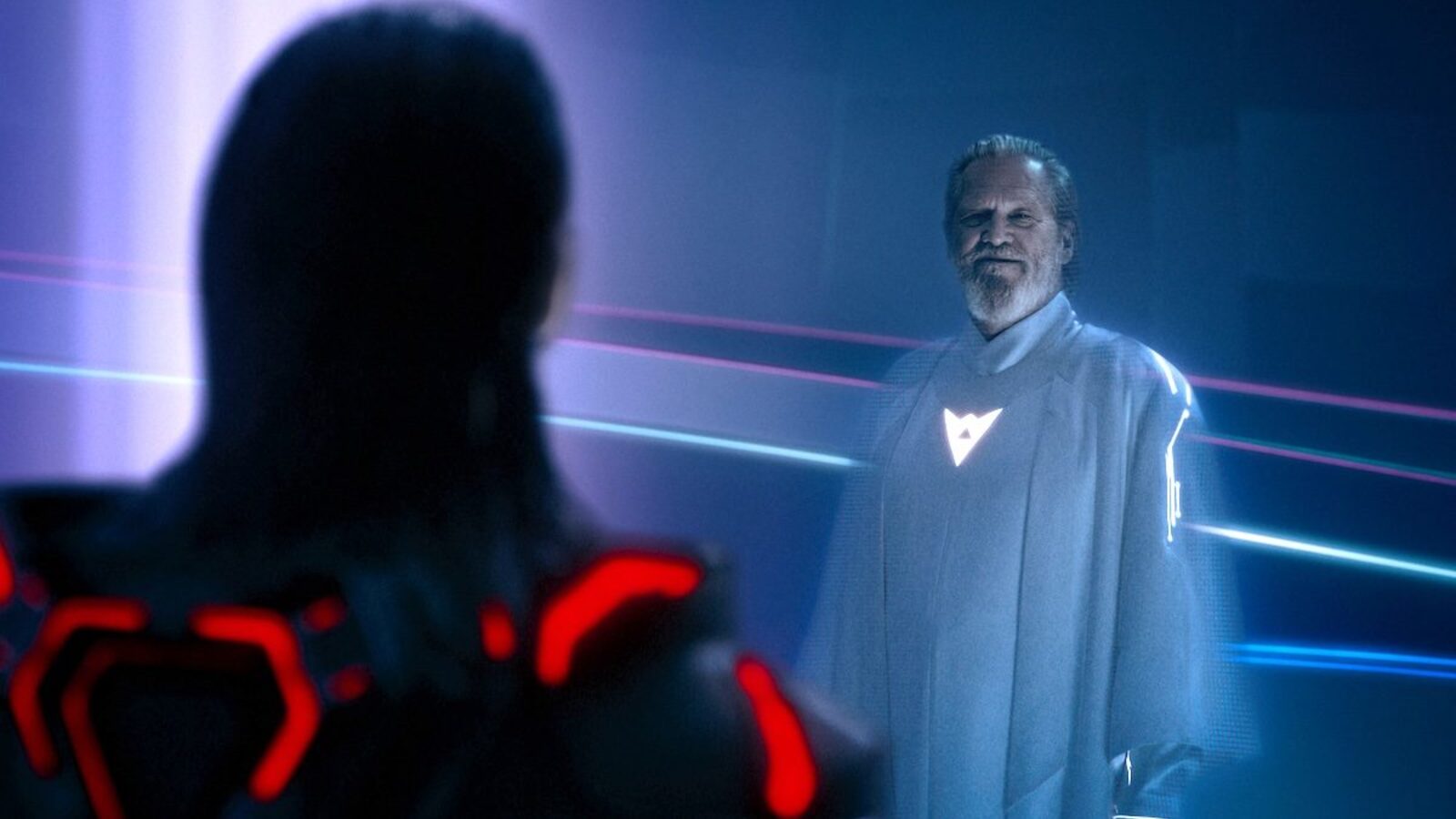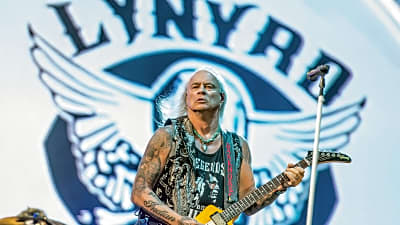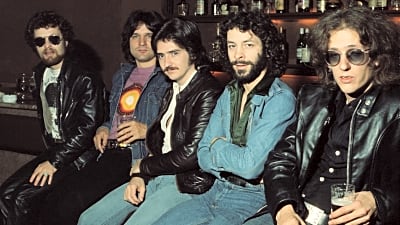
This post contains major spoilers about Tron: Ares and Jeff Bridges role in the film. If you want to avoid them save this post and go see the movie first, man.

We weren’t supposed to know about Jeff Bridges appearance in Tron: Ares. The legendary actor spoiled his own secret cameo. That forced Disney to include him in the film’s promos. But his loose lips didn’t mean the studio had to spoil the unique way they brought him back. It turns out Ares didn’t meet with the real Kevin Flynn. He met with a digital copy of the famed programmer. And that’s how Ares was also able to meet him in a realm that brought fans back to the virtual world of the original 1982 Tron.
The search for Kevin Flynn’s lost permanence code led Ares into a separate offline grid created by the famed programmer himself in the ’80s. That virtual realm, unconnected to the internet, was completely independent from all systems, including both ENCOM and Dillinger Systems’ grids. Because it was built with the technology of the ’80s, it looked like the grid of the ’80s.
That world of retro graphics and retro digital music was the same kind of world Kevin Flynn first entered in 1982 after being digitized.
That realm also contained a helpful Bit, a binary digit that first appeared in Tron. One of those shape-shifting polyhedrals—which can speak in “yeses” and “nos”—had helped both the original Clu program and Kevin Flynn long ago. This time it helped guide Ares towards the digital Flynn.
Getting to Flynn required Ares driving an original Light cycle, another direct replication from the series’ first installment.
The entire sequence was an extended homage to the movie that kicked off the sci-fi series. But even more impressive was that Tron: Ares pulled it off without retconning or undermining anything that happened in Tron: Legacy. That sequel took place on an all-new grid the real Flynn had built. Tron: Legacy then ended with him (seemingly) dying after reintegrating with Clu, his imperfect program double.
By creating a digital double of Flynn, a version that predated the failures of his Legacy grid—which his son Sam downloaded onto an external drive—Tron: Ares managed to bring back Bridges’ character without actually bringing him back.
Despite being a copy, it was still the hopeful Flynn we know. Ares met with a version of the iconic programmer who, like his creator, believed had great hopes for the future of both the real world and the virtual world. When Ares showed his humanity and altruism, the replica Flynn gave him the permanence code Ares needed. But the code was misnamed. He had come to realize Flynn should have called it “impermanence” because it meant Ares could now die.

Tron: Ares‘ virtual world full of ’80s special effects, Bit, the original Light cycle, and the enduring hope of Kevin Flynn weren’t the only way that sequence paid tribute to the original Tron, though. It was also an homage to one of the franchise’s best ideas. In the 1982 movie, ENCOM founder Dr. Walter Gibbs told the sinister Ed Dillinger it didn’t matter if Dillinger fired him. The programmers who had worked there would forever remain a part of the company and the virtual realm they created. “You know, you can remove men like Alan and me from the system, but we helped create it,” said Gibbs. “And our spirit remains in every program we design for this computer.”
The spirit of Kevin Flynn, full of hope for the future, remained in the world he built long ago. And because it did Ares was able to save the world Kevin Flynn came from. That’s why in a movie full of Easter eggs and references to its predecessors, Tron: Ares tribute to the original Tron was its best, man.
More must-reads:
Breaking News
Trending in Entertainment
Customize Your Newsletter
 +
+
Get the latest news and rumors, customized to your favorite sports and teams. Emailed daily. Always free!







